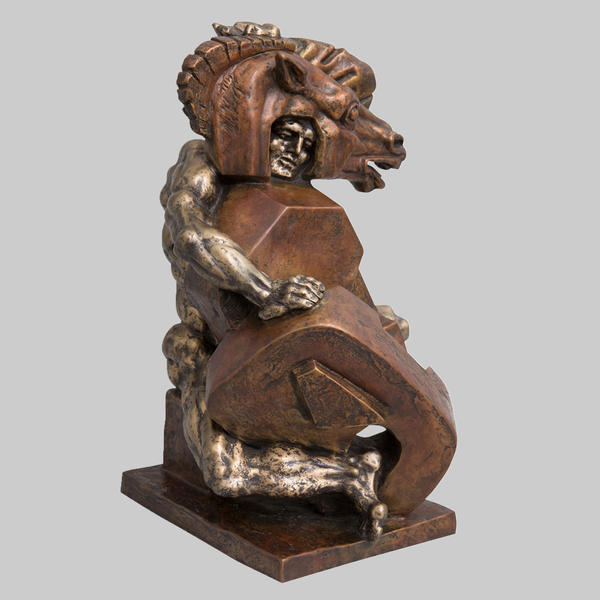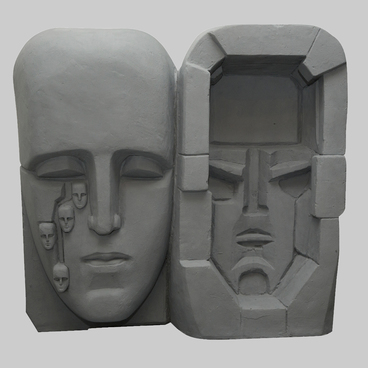This word translated from Latin Oescus means horse. The work of art, created in 1999, is part of the Power of the Animal collection. The figure of the mythical half-man - half-horse was exhibited at the personal exposition of Ernst Neizvestny in Mimi Ferzt New York gallery in 2008. This word translated from Latin Oescus means horse. The work of art, created in 1999, is part of the Power of the Animal collection. The figure of the mythical half-man - half-horse was exhibited at the personal exposition of Ernst Neizvestny in Mimi Ferzt New York gallery in 2008.
In his interview for the American RTVi in 2007, Ernst Neizvestny defined the main idea of the Power of the Animal sculpture series, ’… this is a reflection of the duality of our times: Man as animal and technology’.
Ernst Neizvestny was not simply a sculptor, but also a philosopher. He studied at the Department of Philosophy in Moscow State University, therefore issues concerning the meaning of life, search for the truth and conflict of good and evil are often the main ideas underlying his works. The artist often turned religious and mythological topics, depicting crucifixion. He created a series of artworks called The Apocalypse, Tree of Life and Orpheus.
The Oescus composition just as the rest of the Power of the Animal series is related to the following words from the Bible, ‘and the whole earth wondered after the beast and they worshipped the dragon, because he gave his authority into the beast; and they worshipped the beast, saying, “who is like unto the beast? And who is able to war with him?”
The conflict of the two facets of man – human nature and animal instinct – is reflected in Oescus. The sculpture represents the author’s favorite image of the Centaurus – half-man - half-horse. The cast bronze figure’s style is characteristic of the late period in the sculptor’s body of creative work. The figure combines academic realism, cubism and expressionism. Such amalgamation of genres reflects the master’s complex artistic journey.
The man figure is extremely realistic, in accordance with the classic and academic cannons. Neizvestny sculpted the man’s face and body with anatomic precision. The horse is executed in style of cubism, the animal’s body is hardly outlined. Only the horse’s head is clearly naturalistic. The pile-up of abstract geometric figures in the lower part of the composition, with is practically absorbing the figure of the animal, embodies modern technology penetrating nature and attempting to reshape it.
This sculpture presents the author’s unique technique of deformation and through holes. The character’s face is looking through the hole, his hands, at the same time, are pushing the animal figure away. Man is attempting to free himself of the power of the animal.
This sculpture is made from bronze – the author’s favorite material. The master was a true virtuoso in metal molding technique, achieving a wide variety of form, colour and texture. The light yellow colour of the man’s body is in strike contrast with the reddish brown of the horse’s body and head, relating to dark forces.
The dramatic struggle of man and beast reflected in Oescus was to result in the victory of the Good, that is why the human figure looks so alive, and the horse is deformed, schematic and futuristic.



